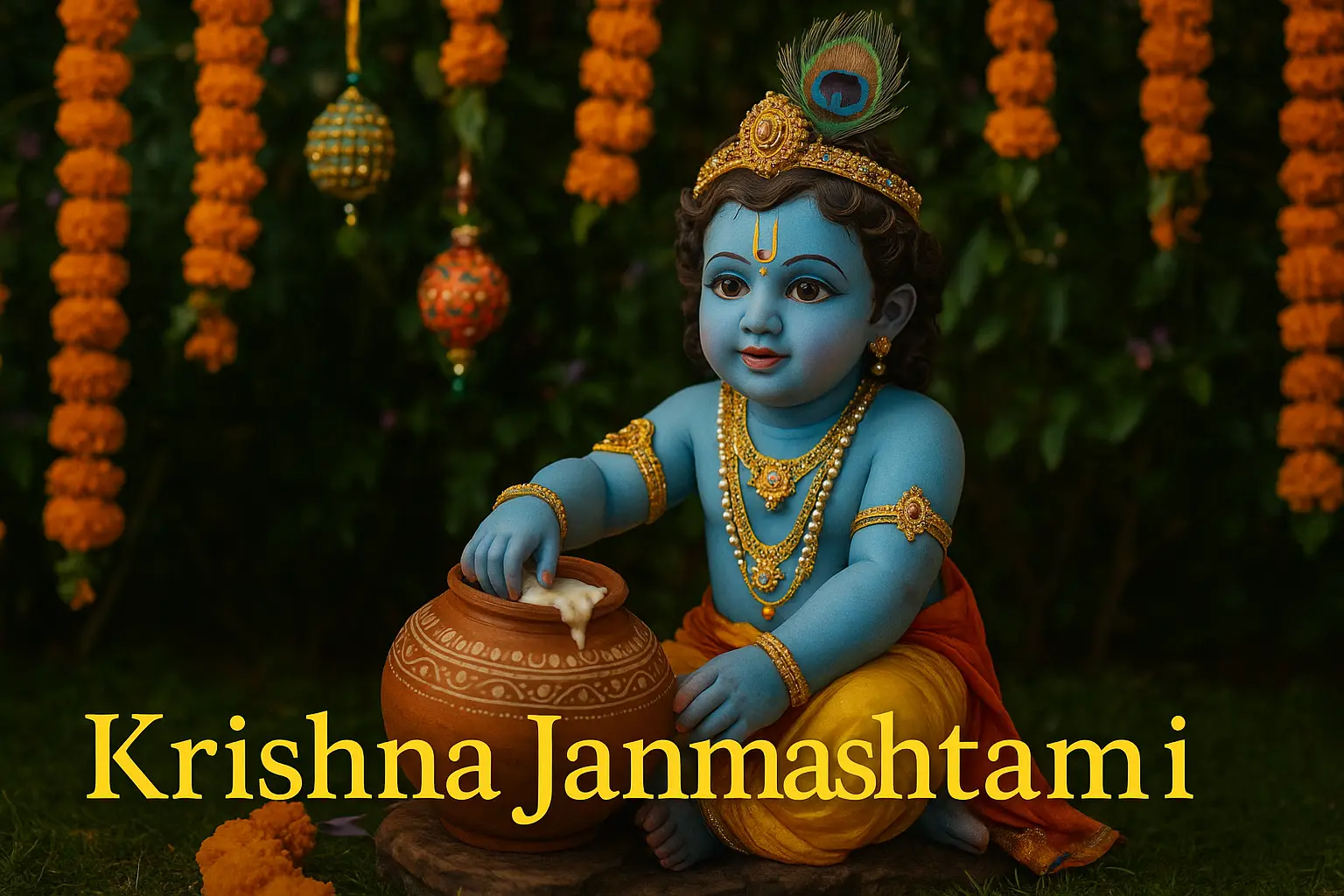Krishna Janmashtami: Celebrating the Divine Birth of Lord Krishna 🌟
Celebrate Krishna Janmashtami, honoring Lord Krishna’s divine birth! Learn its history, rituals, and modern relevance. Join vibrant festivities in India, from Dahi Handi to midnight pujas, and embrace devotion and joy. 🎉
Aditya Pandey

Krishna Janmashtami, one of the most cherished Hindu festivals, celebrates the birth of Lord Krishna, the eighth avatar of Lord Vishnu. Observed on the eighth day (Ashtami) of the dark fortnight (Krishna Paksha) in the Bhadrapada month, typically in August or September, Krishna Janmashtami is a vibrant festival filled with devotion, fasting, prayers, and joyous celebrations. Known for its iconic Dahi Handi events and midnight pujas marking Krishna’s birth, Krishna Janmashtami captivates millions across India and the world with its spiritual and cultural fervor.
For a deeper understanding of India’s rich festival traditions, explore Ancient Festivals of India.
Historical Background of Krishna Janmashtami 📜
The origins of Krishna Janmashtami are rooted in ancient Indian scriptures, particularly the Bhagavata Purana and Mahabharata, which narrate the life and divine deeds of Lord Krishna. Born over 5,000 years ago in Mathura to Devaki and Vasudeva, Krishna’s birth is believed to have occurred under miraculous circumstances, as described in Hindu mythology. His tyrannical uncle, King Kansa, sought to kill him at birth due to a prophecy foretelling his demise at Krishna’s hands, leading to Krishna’s secret transfer to Gokul, where he was raised by Yashoda and Nanda.
Historical evidence of Krishna Janmashtami celebrations dates back to the Gupta period (4th–6th centuries CE), with inscriptions and temple art depicting Krishna’s worship. The festival gained prominence during the Bhakti movement (8th–16th centuries), led by saints like Chaitanya Mahaprabhu, who popularized Krishna devotion through kirtans and dramas. Texts like the Gita Govinda by Jayadeva further enriched Krishna Janmashtami’s cultural legacy.
Today, Krishna Janmashtami is a major festival in India, especially in Uttar Pradesh, Gujarat, Maharashtra, and West Bengal, and among Hindu communities worldwide. Its historical significance underscores Krishna’s role as a divine guide and cultural icon. 🕉️
